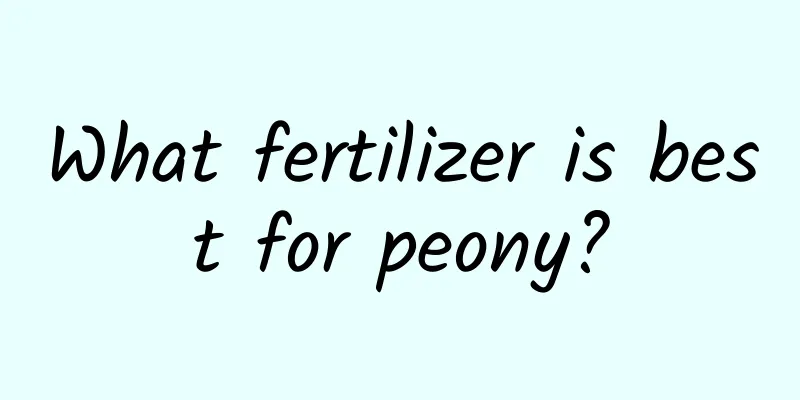What are the effects of high temperatures on vegetables (the effects of high temperatures on vegetable growth and production measures)

|
High temperatures have an adverse effect on the growth of vegetables and are the basic reason for the sluggish autumn vegetable season. Except for a few heat-resistant varieties such as winter melon, pumpkin, bitter melon, bean pods and water spinach, most vegetables are not resistant to high temperatures. In midsummer, not only cool-loving vegetables such as spinach, cabbage, radish, and snow peas cannot grow, but even warm-loving vegetables such as tomatoes and peppers are not suitable for planting. In addition, high temperatures and heavy rainfall as well as high temperatures and drought will lead to the frequent occurrence of a variety of diseases and insect pests, resulting in a significant reduction in production or even harvest failure, exacerbating the occurrence of the autumn off-season. 1. The main harm of high temperature to the growth and development of vegetablesPlant dehydrationIf the temperature is above 30℃ and there is no rain or little rain, it will cause soil drought and atmospheric drought. When the water absorbed by the roots of vegetables from the soil cannot meet the evaporation needs of the plants, the leaves of the vegetable plants will curl and fall off, the quality will deteriorate, the yield will decrease, and they may even wither and die. Plant growthHigh temperatures can easily cause leggy seedlings, especially when the night temperature is too high, which can affect the flowering, fruiting and yield of vegetables in the later stages. Affects flower bud differentiation and sex differentiationHigh temperature and long daylight hours increase the number of male flowers in cucumbers and delay the differentiation of female flowers. When flower buds of tomatoes and peppers differentiate, they have fewer flowers and poor development under high temperature conditions. Loss of disease resistanceWhen the air temperature or ground temperature is higher than the normal growth temperature range of vegetable plants, some disease-resistant varieties will lose their disease resistance and become susceptible varieties, aggravating the occurrence of diseases. Prone to physiological diseasesHigh temperatures are often accompanied by strong light. When excessively strong sunlight shines on the fruits of vegetables such as eggplants and melons for a long time, the sunny side of the fruits will be burned by the sun, causing sunburn. High temperature and drought can also adversely affect the flowering and fruiting process of vegetables such as eggplants and beans, causing flowers and fruits to fall off. Drought and water shortage can easily cause Chinese cabbage to suffer from dry heart disease and tomatoes to suffer from navel rot. Under high temperature, lycopene is difficult to form in tomatoes, so the fruits often appear alternating between yellow, red and white, which greatly reduces the commercial value. Induce a variety of pests and diseasesHigh temperature and drought can aggravate viral diseases, powdery mildew, and mite pests. II. Main measures to deal with high temperature heat damageIntercropping with tall cropsMake full use of the shading effect of tall crops and make good matches between sun-loving and shade-loving crops, such as interplanting eggplant and pepper, interplanting corn and pepper, and interplanting ginger in the shade of mulberry, tea and orchards. Cover and cool down in timeIn summer and autumn, it is best to build a shade shed to block the sun. In summer and autumn, it is best to build a shed and cover the sunshade net to protect leafy vegetables from the sun and insects. For open-field sweet peppers, you can build a shed and cover the sunshade net to protect against the sun and prevent diseases. The protective greenhouse film can be covered with a shade net or coated with mud for sun protection. For the exposed ground between crop rows, a layer of wheat straw, rice straw, chopped straw, etc. can be spread to prevent the ground temperature from being too high. To prevent the covering from being washed away during watering, some soil can be pressed on it. For vegetables and fruits exposed to the sun, you can cover them with weeds, old newspapers, etc. to prevent the sun from burning the fruits. Use its own leaves to block out the sun and shade. During the high temperatures in summer and autumn, make full use of the stems and leaves to provide shade and protect the fruit. When pinching tomatoes, leave two layers of leaves above the top layer of fruit to shade the young tomatoes from the sun. When the cabbage is 80% mature and the cauliflower is headed, pick the outer leaves and cover the head with them to protect against the sun and improve quality. When cultivating vegetables in summer and autumn, it is generally better to plant them densely rather than sparsely, so that they can provide mutual shade and facilitate their growth. Reasonable wateringWatering is one of the most effective measures to alleviate high temperature weather. You can appropriately increase the frequency of watering and the amount of water each time. If conditions permit, you can use sprinkler irrigation or spray water on the leaves to prevent the leaves from dehydration. The best time to water is early in the morning or evening. Do not water at noon when the temperature is high. Use well water or low-temperature river water to irrigate. Water evenly and thoroughly to keep the soil moist. Drain water in time after a hot thunderstorm and irrigate with cool water to prevent damage from hot rain. Timely topdressingAccording to the type and growth stage of vegetable crops, combined with watering, timely topdressing, but not human feces and urine. Nitrogen, phosphorus and potassium should be applied in combination, such as nitrogen fertilizer as the main fertilizer in the seedling stage, phosphorus and potassium fertilizer as the auxiliary fertilizer; phosphorus and potassium fertilizer as the main fertilizer in the fruiting stage, nitrogen fertilizer as the auxiliary fertilizer. Top dressing should be applied once during the seedling stage, early fruiting stage and peak fruiting stage. When the leaves are yellow and weak, you can spray 0.1% to 0.2% potassium dihydrogen phosphate solution, Penshibao, Ainong, etc. on the leaves to promote vegetable growth and prevent premature aging of leaves. Especially after a hot thunderstorm, we should strengthen tillage and loosen the soil, and apply quick-acting fertilizers in time. Symptomatic prevention and control of diseases and insect pestsStarting from the initial flowering stage of tomatoes or the rosette stage of Chinese cabbage, you can spray a mixture of calcium chloride and naphthylacetic acid to prevent and control navel rot or dry heart disease. You can use naphthylacetic acid, anti-drop agent, 2, 4-D and other plant growth regulators to treat the flowers of solanaceous fruits or beans to prevent them from falling. You can spray virus A, plant disease killer, fungus and virus cleaner to prevent viral diseases. You can spray triadimefon, wuyijinsu, Fuxing and other pesticides to prevent powdery mildew; you can spray acaricides to prevent mites. But you should pay attention that vegetables sprayed with pesticides should be put on the market after the safe interval to avoid affecting human health. |
<<: Kiwifruit planting requirements for soil (what soil is suitable for kiwifruit planting)
Recommend
Sweet potato growth environment conditions and characteristics
Sweet potato growth environment conditions and re...
Should Australian fir be watered thoroughly? The correct way to water
Is the Australian fir watered thoroughly? Austral...
Gardenia hydroponic method
Hydroponics Method 1. Branch selection Choose str...
Disease and Pest Control of Primula oleracea
Mosaic This disease will harm the entire plant. I...
When is the best time to water the longevity flower? What kind of water is better?
Kalanchoe watering time The Kalanchoe plant does ...
Jasmine turns yellow and wilts and doesn’t bloom? It's definitely because you didn't do it well!
1. Yellowing of leaves Reason 1: Insufficient lig...
How to root rose branches in water
1. Water insertion time Rose water plugging does ...
It is best to water the pink palm every few days
How often should I water my pink palm? In spring ...
What to do if the leaves of the green radish turn yellow
1. Cut off the yellow leaves If you find that its...
How to grow pumpkin to get high yield?
Pumpkin, also known as squash, pumpkin, rice melo...
Is lemon a fruit or a vegetable?
Is lemon a fruit or a vegetable? Lemon is a fruit...
It is better to water the green radish every few days.
How often should I water my green radish? The gre...
Golden Edge Chlorophytum cultivation methods and precautions
Farming methods Soil: Chlorophytum comosum is not...
Can pineapples be grown in Hunan?
Can pineapples be grown in Hunan? Pineapples can ...
Medicinal effects of gardenia
1. Flowers This flower has many medicinal propert...









